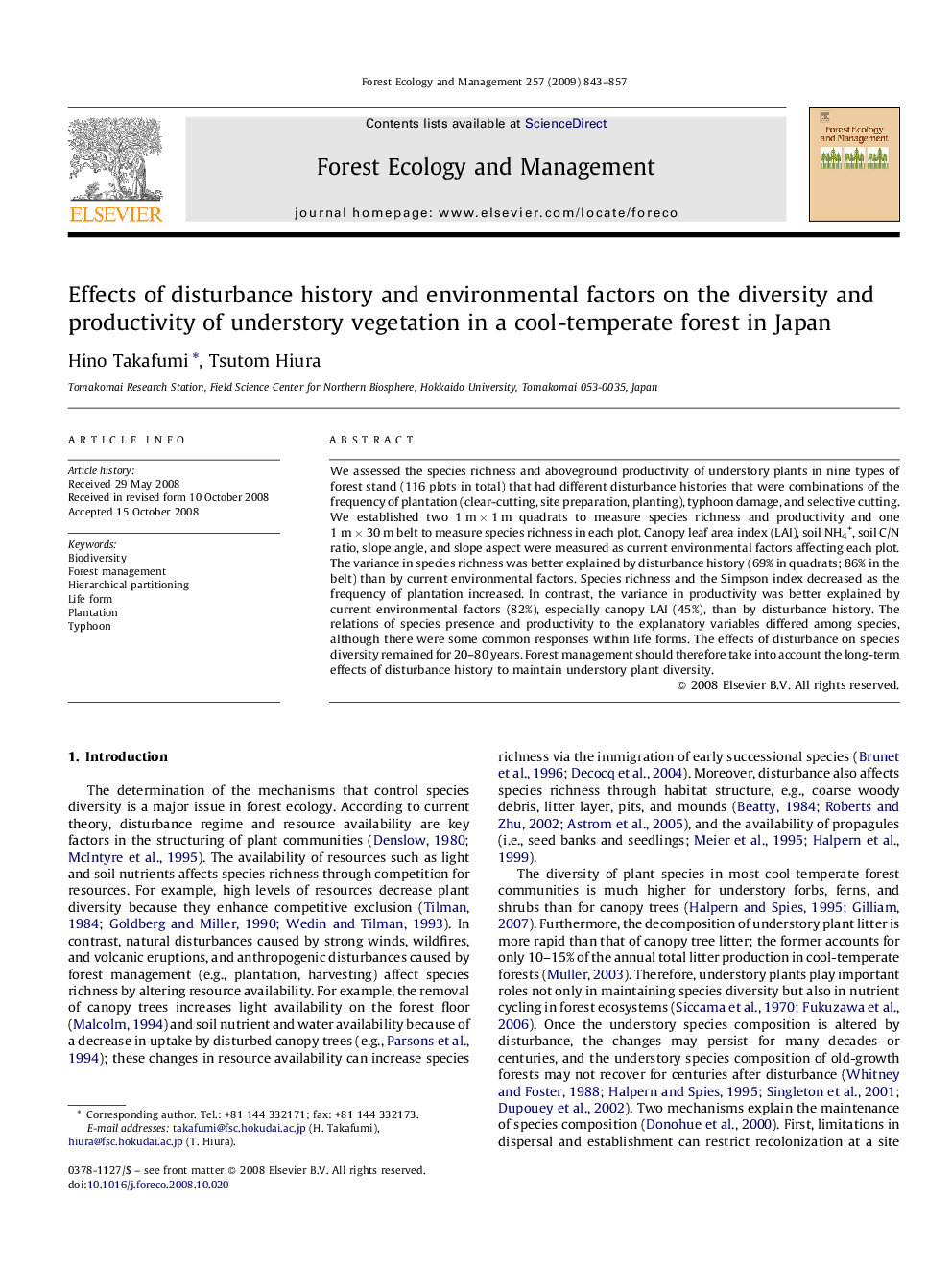| Article ID | Journal | Published Year | Pages | File Type |
|---|---|---|---|---|
| 89091 | Forest Ecology and Management | 2009 | 15 Pages |
We assessed the species richness and aboveground productivity of understory plants in nine types of forest stand (116 plots in total) that had different disturbance histories that were combinations of the frequency of plantation (clear-cutting, site preparation, planting), typhoon damage, and selective cutting. We established two 1 m × 1 m quadrats to measure species richness and productivity and one 1 m × 30 m belt to measure species richness in each plot. Canopy leaf area index (LAI), soil NH4+, soil C/N ratio, slope angle, and slope aspect were measured as current environmental factors affecting each plot. The variance in species richness was better explained by disturbance history (69% in quadrats; 86% in the belt) than by current environmental factors. Species richness and the Simpson index decreased as the frequency of plantation increased. In contrast, the variance in productivity was better explained by current environmental factors (82%), especially canopy LAI (45%), than by disturbance history. The relations of species presence and productivity to the explanatory variables differed among species, although there were some common responses within life forms. The effects of disturbance on species diversity remained for 20–80 years. Forest management should therefore take into account the long-term effects of disturbance history to maintain understory plant diversity.
